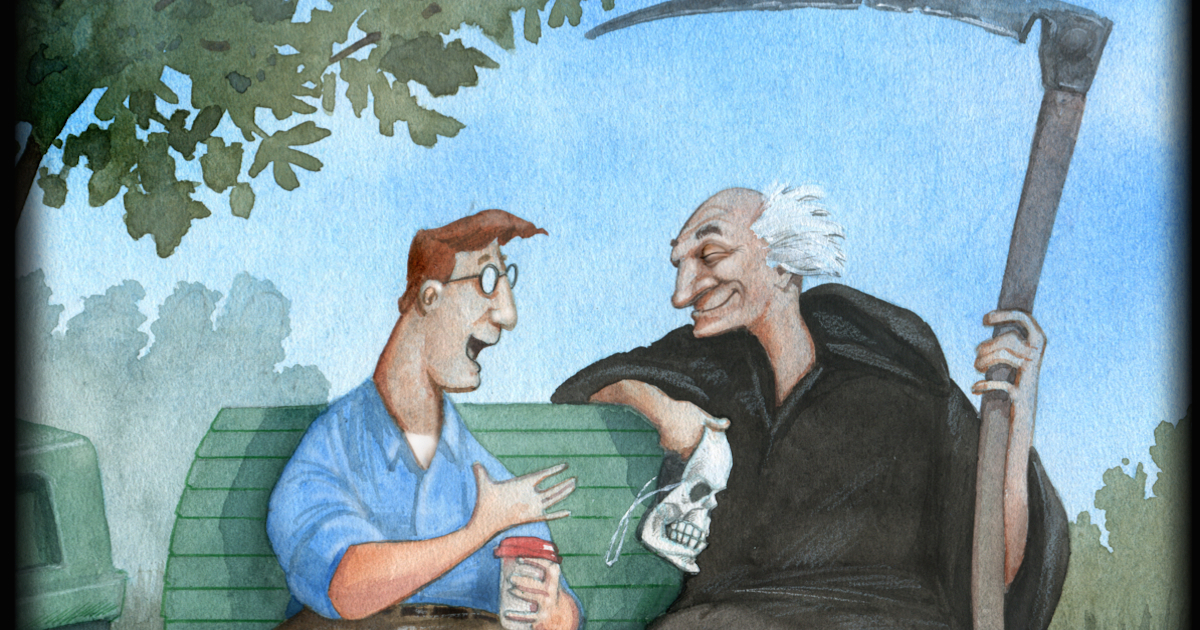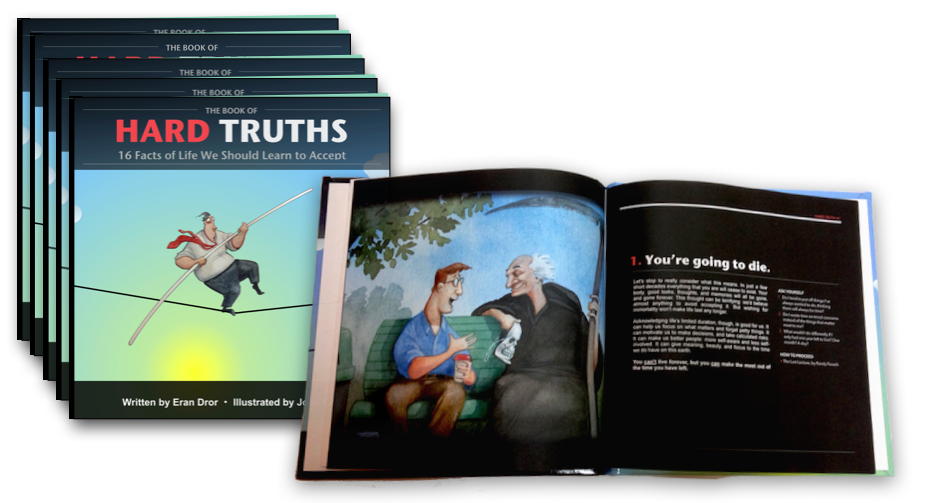Ever since I launched The Book of Hard Truths on April 23rd, I’ve had lots of people ask me why I wrote it. I usually mumble a few words about the importance of facing up to difficult truths, I mention Brené Brown’s excellent talk about The Power of Vulnerability, which shows why not shying away from unpleasant truths is so important. I also mention Alain de Botton’s excellent book and TED talk, in which he claims that we have “secularized badly”, and that we have abandoned the great redeeming power of visual art to dry, academic institutions.
But people don’t seem satisfied with mere intellectual reasons, and I can understand why. So now, a month later and with almost 300 copies in people’s hands (some 200 as free PDF downloads), it’s time to confess:
I wrote this book for myself.
I wrote it because I felt like I wasted too much of my life running away from these truths. And that my life has been a very gradual, very uncomfortable process of discovering them and (in good cases) coming to terms with them. I don’t know about others, but I felt that I received very little help from society in dealing with these questions. Nobody had that tough chat with me early on, to explain that I will always share the basic limitations and vulnerabilities that all human beings have. That I will never be invulnerable, all-knowing, immortal, or infallible. I will never be perfect. I will never “arrive”.
Despite being an Atheist, when I first read the Serenity prayer years ago, it had a powerful effect on me. It goes something like this:
God, grant me the serenity to accept the things I cannot change,
The courage to change the things I can,
And wisdom to know the difference.
It made me wonder: Why don’t they teach you these things in school? Surely there are things we tend to think we can change, but cannot. If someone else has already figured them out, why won’t they tell me?!
Well, it turns out they have. There are any number of books about these subjects, and if we consider that most religions are a response to just this kind of question, then it’s safe to say people have been trying to address hard truths for millenia.
So why wasn’t I getting this message?
Because I was brought up in secular culture, and because Alain de Botton is right: We have “secularized badly.”

We have psychologists to deal with mental illness, and professors to impart theoretical knowledge, and philosophers to research and debate truth, and artists to express their personal truths and anxieties. What we don’t have is a system or a field to address the universal needs of the psyche. A profession devoted to helping us grow up, evolve as human beings, understand our emotions, find balance in our lives, face up to the challenges of life, be happy and peaceful in the face of obstacles, connect better with our fellow men. In these incredibly important areas of life we are left more or less alone to find our way. We go out searching for answers in books, films, talks, art museums, and we do find some. But secular society does not help us much when it comes to organizing, curating, or repeating these lessons. And for the most part neither do our parents, our teachers, or our therapists.
This is why, when I read a friend’s impassioned essay about how accepting death has changed him, it hit me. I had a growing list of these hard truths in my own journals, and I knew that accepting them was vitally important to achieving peace and happiness. And I had Alain de Botton’s admonition about how we waste the power of visual art ringing in my ears. (I had just been to one of his talks in NYC and got his book.) And so, in a flash, the idea came to me:
I will create a book of visual art that carried home the painful lessons of life that were holding myself and perhaps others back. It would be a trap for the mind – my own mind, but also other people’s – to lure us into confronting these hard truths and coming in contact with them periodically. A book of artworks one could turn to for perspective and consolation.
I pitched this idea to John Cox, the most talented illustrator I knew, and he liked it. But it wasn’t until I saw his take on the first truth, the truth of death, that I was convinced I had to write this book. A feeling of peace and acceptance permeates these illustrations and that was clear from the very start.

A couple of years later, the book is now out and I couldn’t be prouder. John’s art is remarkable in its empathy and depth. And people seem to generally respond to the book in the way I hoped. They like browsing through it, but even more than that they seem to like the idea of having it around.
I still find the book helpful in my own daily life. I still pick it up and browse through the illustrations to check myself and remind myself of the larger picture. And I rejoice at having the original illustrations to hang on my walls.
And this is the truly personal truth: It’s for my own use, before anyone else’s, that I wrote The Book of Hard Truths.



